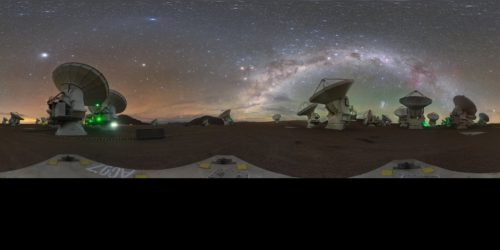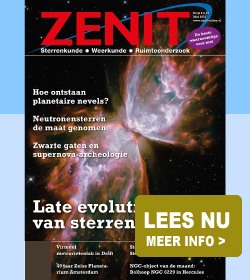Is ’t niet schitterend? De hemel boven ALMA in 360 graden.
Explore the night sky over the Chajnantor plateau in this stunning 360 degree panorama, surrounded by the @ALMAObs antennas Credit: P. Horálek / @ESO https://t.co/fnGLmEI5b0 pic.twitter.com/RQ6NpoXzfl
— ESO (@ESO) August 10, 2019
Aha, dus zó bereken je de stuwkracht van een raket.
RT @ArianeGroup: It's the formula for calculating the thrust of a rocket engine! As you can imagine, it's quite useful to us. ????#ArianeSummerHomework pic.twitter.com/rgCcNeoKRY
— ruimtevaart (@ruimtevaart) August 10, 2019
Hé wat leuk, planeten bakken. Heel Holland bakt straks planeten.
How to bake scientifically accurate cake planets https://t.co/ahcQCvUi4G pic.twitter.com/BevBbG2fQz
— Massimo (@Rainmaker1973) August 10, 2019
Ik kan hier uren naar blijven kijken.
Five @AerojetRdyne Solid Rocket Boosters and a two-chamber single engine RD-180 lift @ulalaunch #Atlas551 off SLC-41. Each SRB produces 348,500 lbs of thrust along with the 860,200 lbs of thrust produced by the RD-180. pic.twitter.com/psxiojvKD7
— Nathan Barker (@NASA_Nerd) August 9, 2019
Zo groot is planetoïde Bennu (nou ja, een stuk ervan). Zoek de astronaut.
RT @NASAWatch: Asteroid Bennu at a human scale (look closely). @OSIRISREx pic.twitter.com/pfK8pDQyc6
— ruimtevaart (@ruimtevaart) August 9, 2019
Mmmm, iets met de middelpuntvliegende kracht misschien?
Law of Physics pic.twitter.com/Ggeja2Ibj1
— Space Explorer Mike (@MichaelGalanin) August 8, 2019
Zoveel radiostraling hebben alle radiotelescopen op aarde tot nu toe verzameld.
So, it's the kinetic energy from a falling snowflake, which is equal to about 30 microjoules and greater than all of the radio energy ever collected by every radio telescopes in the world! These instruments are quite sensitive. ???? pic.twitter.com/AjgvBPm1tZ
— NRAO (@TheNRAO) August 6, 2019



Speak Your Mind